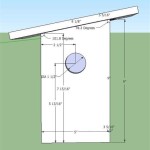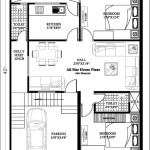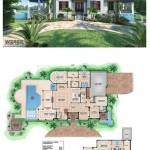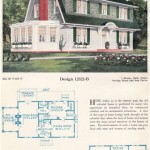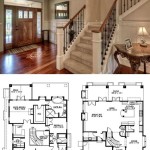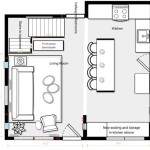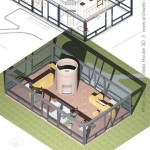Sketches of House Plans: A Guide to Conceptualizing Your Dream Home
The initial phase of any home construction project invariably involves the creation and review of house plans. While sophisticated software and computer-aided design (CAD) tools are prevalent in modern architectural practice, the humble sketch remains a vital component in the initial conceptualization process. A house plan sketch serves as a visual articulation of the client's needs, desires, and budget, allowing architects and designers to explore a range of possibilities before committing to a finalized blueprint.
Sketches of house plans can range from rudimentary stick figure representations outlining basic room layouts to more detailed renderings incorporating specific architectural features. The level of detail is often dictated by the stage of the design process and the communication needs between the architect and the client. Regardless of the level of complexity, the purpose of a sketch remains consistent: to translate abstract ideas into tangible visual representations that can be analyzed, revised, and refined.
The Importance of Sketches in the Design Process
Sketches provide a flexible and iterative platform for exploring design options. Unlike CAD drawings, which often require significant time and effort to modify, sketches can be quickly altered to reflect evolving ideas or address unforeseen constraints. This inherent flexibility fosters a collaborative environment where architects and clients can freely experiment with different layouts, spatial arrangements, and aesthetic elements. The speed and ease of sketching allow for a more rapid exploration of design alternatives, ultimately leading to a more optimized and personalized home design.
Furthermore, sketches facilitate effective communication. A well-executed sketch can convey design intent more effectively than lengthy verbal descriptions or technical terminology. By providing a visual representation of the proposed structure, clients can readily grasp the architect's vision and provide valuable feedback. This visual feedback loop is crucial for ensuring that the final design accurately reflects the client's needs and preferences. The act of sketching also encourages a more direct and personal dialogue between the architect and the client, fostering a sense of trust and collaboration.
Another key advantage of sketches lies in their ability to reveal potential design flaws early in the process. By visually representing the proposed structure, architects can identify potential problems related to spatial relationships, circulation patterns, or structural integrity. These early detections allow for timely corrections, preventing costly and time-consuming revisions later in the construction phase. In essence, sketches act as a preliminary filter, weeding out unworkable ideas before they become entrenched in the design.
Key Elements of Effective House Plan Sketches
While sketches are inherently informal, certain elements are crucial for ensuring their clarity and effectiveness. A well-executed house plan sketch should accurately represent the basic dimensions and proportions of the proposed structure. This includes indicating the overall size of the building, the dimensions of individual rooms, and the relationships between different spaces. Accurate proportions are essential for preventing misinterpretations and ensuring that the sketch provides a realistic representation of the intended design. The use of a consistent scale, even if approximate, helps maintain perspective and allows for a more accurate assessment of spatial relationships.
Clearly delineating room functions is equally important. Sketches should clearly identify the intended use of each space, whether it be a bedroom, bathroom, kitchen, or living area. This can be achieved through simple labels or the incorporation of recognizable furniture symbols. By clearly defining the function of each space, the sketch provides a clear understanding of the overall layout and circulation patterns. Furthermore, indicating the placement of key fixtures, such as sinks, toilets, and appliances, can further enhance the sketch's clarity and inform discussions about the practical functionality of the design.
In addition to spatial dimensions and room functions, effective house plan sketches should also indicate the location of important architectural features. This includes windows, doors, staircases, and fireplaces. The placement of these features significantly impacts the overall aesthetics and functionality of the home. For example, the placement of windows can influence natural light, views, and ventilation. Similarly, the location of doors and staircases dictates circulation patterns and the accessibility of different areas within the house. By including these features in the sketch, architects can provide a more comprehensive representation of the proposed design and facilitate informed discussions about its overall livability.
Tools and Techniques for Sketching House Plans
The tools required for sketching house plans are relatively simple: pencil, paper, and a ruler. While specialized architectural sketching tools, such as parallel bars and triangles, can enhance accuracy and precision, they are not essential for creating effective sketches. The primary focus should be on developing a clear and consistent technique that allows for efficient and accurate representation of the proposed design. The choice of pencil should be based on personal preference, with softer leads (e.g., 2B or 4B) providing a darker line for bolder sketches, while harder leads (e.g., HB or 2H) offer greater precision for detailed drawings.
One fundamental technique for sketching house plans is the use of orthogonal projections. Orthogonal projections involve representing the building from multiple viewpoints, typically including a plan view (looking down from above), elevations (looking at the exterior walls), and sections (cutting through the building to reveal interior details). By combining these different views, architects can provide a comprehensive representation of the proposed structure and its spatial relationships. The plan view is typically the starting point, as it outlines the basic layout of the rooms and their interconnectivity. Elevations provide a visual representation of the exterior appearance of the building, while sections reveal the internal structure and spatial relationships within the walls and roof.
Another valuable technique is the use of shading and hatching to create depth and texture. By applying shading to different surfaces, architects can create a sense of volume and dimension, making the sketch appear more realistic and visually appealing. Hatching involves drawing closely spaced parallel lines to indicate different materials or textures. For example, denser hatching can be used to represent brick or stone, while lighter hatching can be used to represent wood or plaster. These techniques enhance the visual clarity of the sketch and allow for a more nuanced representation of the proposed design. Furthermore, incorporating human figures and landscaping elements can help to convey the scale and context of the building, making it easier for clients to visualize the finished product.
In conclusion, sketches of house plans remain an invaluable tool for architects and designers. They offer a flexible and iterative platform for exploring design options, facilitating effective communication between architects and clients, and identifying potential design flaws early in the process. By mastering the key elements of effective sketches and utilizing appropriate tools and techniques, architects can create compelling visual representations that translate abstract ideas into tangible realities, ultimately leading to the creation of dream homes.

Floor Plan House Sketch Stock Vector Ilration Of Building 52483697

Create And Visualize House Plans In Minutes Roomsketcher

Floor Plan Design Tutorial

Real Estate Watercolor 2d Floor Plans Part 1 Boryana Ilieva

Create And Visualize House Plans In Minutes Roomsketcher

Draw Floor Plans

How To Draw A Floor Plan Live Home 3d

Floor Plan Sketch To 2d 3d Plans Best

Dc Floor Plans 703 718 6504 Blueprints Sketches Renderings

Top 5 Benefits Of Architectural House Plans The Architects Diary

